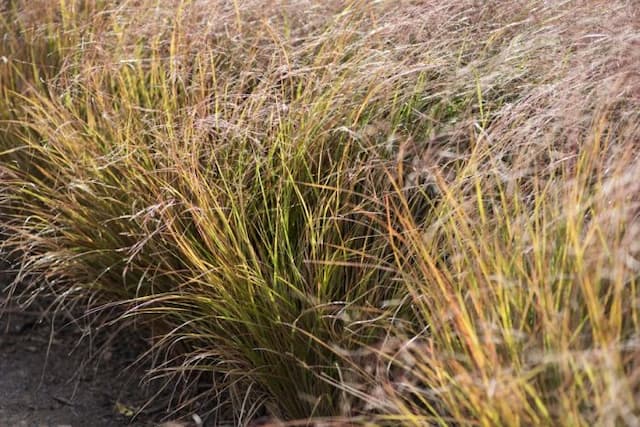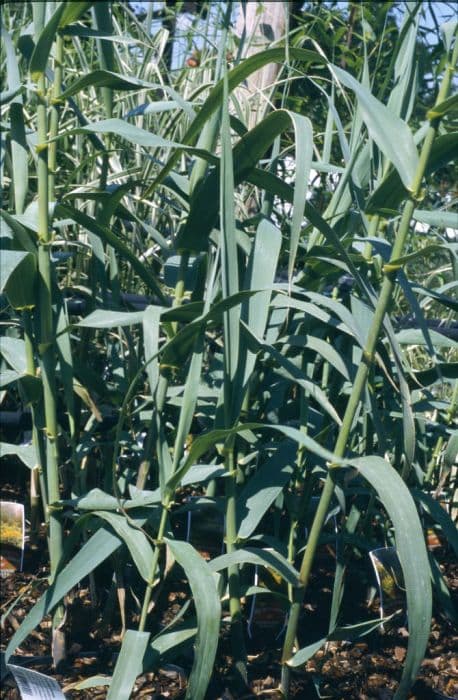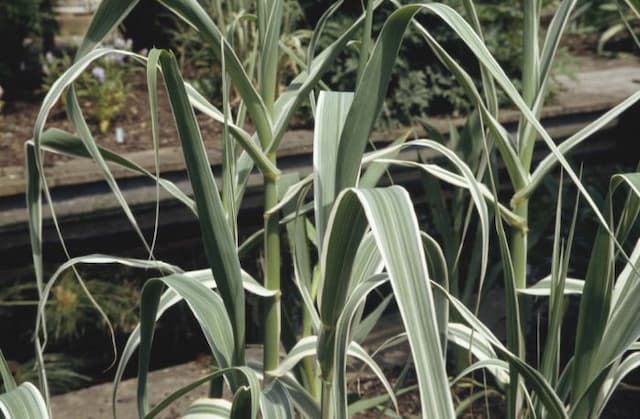Cassian's Choice Fountain Grass Pennisetum alopecuroides 'Cassian's Choice'











ABOUT
Pennisetum alopecuroides 'Cassian's Choice', commonly known as fountain grass, is an ornamental perennial grass known for its elegant and arching growth habit. This grass features a lush clump of narrow leaves, which are deep green in color and have a slightly textured surface. As the seasons progress, the leaves may turn lovely shades of gold, orange, or burgundy, especially during the cooler months. The distinguishing characteristic of fountain grass is its bottlebrush-like flower spikes that emerge above the foliage. These flowers appear in mid to late summer, starting as a light green or creamy color and maturing to a golden brown or tan hue. The fluffy and soft appearance of the flower plumes contributes to the overall fountain-like appearance of the plant, adding a touch of softness and movement to the landscape. Fountain grass also has a cascading growth pattern, where the foliage and flowering stems gently bend toward the ground, creating a fountain effect that is particularly appealing when planted en masse or as a focal point. The texture of this grass is fine yet dense, which allows it to blend well with other plants in a garden setting, providing contrast with plants that have larger leaves or different colors. Overall, fountain grass 'Cassian's Choice' is celebrated for its graceful form, attractive foliage, and showy flower spikes, which contribute to its popularity as a choice for gardeners and landscapers looking to add texture, color, and movement to their garden design.
About this plant
 Names
NamesFamily
Poaceae.
Synonyms
Chinese Fountain Grass, Fountain Grass, Swamp Foxtail Grass, Foxtail Fountain Grass.
Common names
Pennisetum alopecuroides.
 Toxicity
ToxicityTo humans
Fountain grass is generally not considered toxic to humans. Therefore, if ingested, it is not likely to cause poisoning or serious health issues. However, ingesting any plant material could potentially cause discomfort or an allergic reaction in some individuals.
To pets
Fountain grass is also not known to be toxic to pets. It should not cause poisoning if pets consume small amounts of the plant. However, as with humans, eating plant material can lead to gastrointestinal upset or an allergic reaction in some animals.
 Characteristics
CharacteristicsLife cycle
Perennials
Foliage type
Deciduous
Color of leaves
Green
Flower color
Tan
Height
3 feet 60 centimeters (91.44 cm)
Spread
2 feet 60 centimeters (60.96 cm)
Plant type
Grass
Hardiness zones
5
Native area
Asia Australia
Benefits
 General Benefits
General Benefits- Ornamental Appeal: Cassian's Choice Fountain Grass adds visual interest to gardens with its fluffy, bottlebrush-like flower spikes and graceful, arching foliage.
- Drought Tolerance: Once established, this variety of Fountain Grass is quite tolerant of drought, making it suitable for xeriscaping or low-water garden designs.
- Erosion Control: The dense clumping growth habit helps stabilize soil and control erosion on slopes or in areas that are prone to runoff.
- Seasonal Interest: Fountain Grass provides year-round interest with green foliage in spring and summer, turning to golden hues in fall, and tawny seed heads in winter.
- Wildlife Attraction: The seeds of the grass attract birds, providing food for wildlife, while its structure offers shelter for small creatures.
- Low Maintenance: Cassian's Choice requires minimal care once established, with little need for fertilizing or pruning.
- Versatile Landscaping: Suitable for borders, mass plantings, or as a specimen plant, it works in a variety of landscape settings from formal to naturalistic.
- Heat Resistance: It thrives in hot climates and can withstand high summer temperatures, making it a robust choice for warm regions.
 Medical Properties
Medical PropertiesThis plant is not used for medical purposes.
 Air-purifying Qualities
Air-purifying QualitiesThis plant is not specifically known for air purifying qualities.
 Other Uses
Other Uses- Fountain Grass can be used in craft projects, such as making dried flower arrangements or wreaths due to its attractive fluffy seed heads.
- When dried, the grass can be incorporated into homemade paper, providing texture and visual interest to the final product.
- Fountain Grass can be used as living screens or privacy hedges because of its dense and clumping growth habit.
- The seeds of Fountain Grass can be used as a filling for homemade sensory or stress-relief toys, providing a unique texture.
- Landscapers may utilize this ornamental grass as a way to stabilize soil in areas prone to erosion thanks to its extensive root system.
- The dried plumes of Fountain Grass can be used to add interest to indoor planters or terrariums that feature a variety of textures and forms.
- Fountain Grass can be planted in rain gardens as it is tolerable of wet conditions and helps in water management and filtration.
- Photographers and artists may incorporate Fountain Grass into their compositions and works due to its movement and grace in the wind.
- The grass clippings can be used as a natural mulch for garden beds, providing nutrients to the soil as they decompose.
- Fountain Grass, especially when used in large plantings, can provide a habitat for wildlife, offering shelter and food sources for birds and insects.
Interesting Facts
 Feng Shui
Feng ShuiThe Fountain Grass is not used in Feng Shui practice.
 Zodiac Sign Compitability
Zodiac Sign CompitabilityThe Fountain Grass is not used in astrology practice.
 Plant Symbolism
Plant Symbolism- Beauty and Grace: Fountain Grass, such as Pennisetum alopecuroides 'Cassian's Choice', is often associated with beauty due to its graceful, fountain-like foliage and feathery flower heads that sway elegantly in the breeze.
- Flexibility and Resilience: The plant's ability to move with the wind without breaking represents flexibility and resilience in the face of adversity.
- Privacy and Boundaries: Gardeners often use Fountain Grass as a natural screen or border, symbolizing the creation of privacy and the setting of boundaries.
 Water
WaterFor the fountain grass, it's best to ensure the soil remains moist but not waterlogged. During the growing season, typically spring through summer, water the grass once a week with approximately 1-1.5 gallons, depending on the soil's moisture level and the regional climate. Reduce watering frequency in the fall, and during the winter, you may only need to water it once every two weeks if there's no natural rainfall. Adjust the watering schedule based on rainfall, and always check the top inch of the soil for dryness before watering.
 Light
LightFountain grass thrives in full sun conditions, requiring at least six hours of direct sunlight daily to perform best. It's an adaptable plant, however, and can tolerate part shade, but the amount of flowering and overall vigor might be reduced. Ideally, plant it in a spot that gets consistent sunlight for the majority of the day without any obstructions blocking the light.
 Temperature
TemperatureFountain grass grows best in warm conditions and is hardy in USDA zones 5 through 9. It can survive minimum winter temperatures down to around -20 degrees Fahrenheit, but the ideal temperature range for active growth is between 60 and 80 degrees Fahrenheit. During extreme heat, the plant may go dormant if temperatures consistently exceed 90 degrees Fahrenheit.
 Pruning
PruningPrune fountain grass in late winter or early spring before new growth commences. This helps to remove old, brown foliage and stimulate fresh growth. It's usually sufficient to prune once annually, cutting the grass back to about 3-4 inches from the ground. Pruning not only maintains the plant's appearance but also encourages a healthier, fuller plant for the coming growing season.
 Cleaning
CleaningAs needed
 Soil
SoilFountain Grass thrives in well-draining soil with a pH range of 5.8 to 7.2. A mixture of garden soil, compost, and coarse sand would create an ideal environment for optimal growth and health. Regular fertilization can help maintain the plant’s vigor.
 Repotting
RepottingFountain Grass, being a perennial and a larger grass variety, typically does not require frequent repotting. It can be divided or repotted every couple of years to maintain its health and to manage its size.
 Humidity & Misting
Humidity & MistingFountain Grass is tolerant of a wide range of humidity levels and does not require special considerations for humidity. It is adaptable to both low and high humidity environments outdoors.
 Suitable locations
Suitable locationsIndoor
For Fountain Grass, provide full sun and well-draining soil.
Outdoor
Plant Fountain Grass in full sun to partial shade in moist soil.
Hardiness zone
5-9 USDA
 Life cycle
Life cycleThe life of Fountain Grass 'Cassian's Choice' begins with the germination of seeds that typically occurs in the warmer seasons, given suitable moist soil conditions. After germination, the seedlings develop into young plants with characteristic narrow, arching green leaves. As the plants mature, they form dense, mounding clumps that can reach up to 3 feet in height and spread. In summer to early fall, Fountain Grass 'Cassian's Choice' produces showy, fluffy, bottlebrush-like flower spikes, which can be a beige to pink color, adding to its ornamental appeal. Once the blooming period concludes, the seeds set and ripen, then disperse, completing the reproductive cycle. In winter, the foliage may die back, especially in colder climates, but the plant will typically regrow from its crown the following spring.
 Propogation
PropogationPropogation time
Late Spring-Early Summer
The most popular method of propagation for Pennisetum alopecuroides 'Cassian's Choice', commonly known as Fountain Grass, is by division. This is best done in the spring as the grass breaks dormancy and begins to show new growth. To propagate by division, dig up the parent clump and carefully split it into smaller sections, ensuring that each section has a portion of the root system and several growing points. These divisions should then be replanted at the same soil depth as the parent plant and watered well to establish. It's important to keep the soil consistently moist but not waterlogged during the initial growth period to encourage root development.









